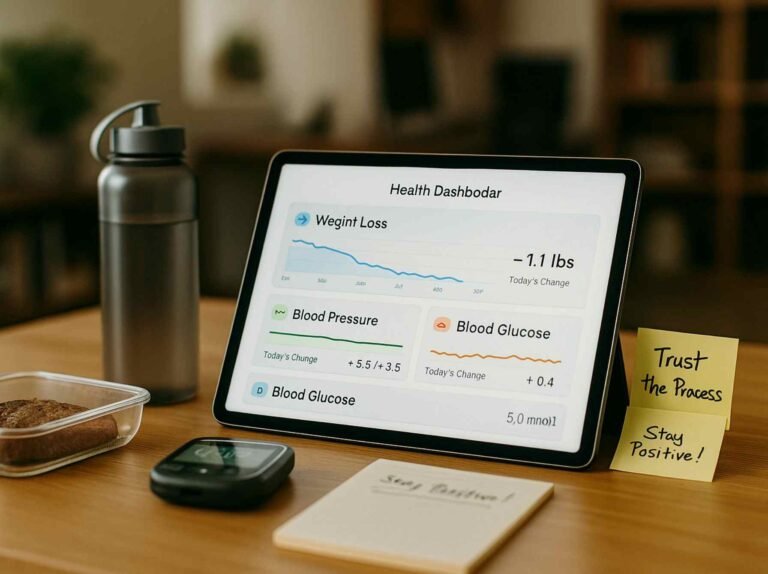What we eat—and when we eat—shapes how our bodies function, influencing everything from energy levels to long-term health.
- Nutrition is the process of absorbing and using nutrients for growth, repair, and fuel.
- Metabolism is the system that converts these nutrients into energy, ensuring our bodies run efficiently.
- Fasting, the intentional pause from eating, triggers profound metabolic shifts, helping the body switch from storing energy to burning it.
Understanding these fundamentals isn’t just about knowing the science—it’s about making better choices. The way we eat influences everything, and different diets—like the
- Carnivore Diet,
- OMAD (One Meal A Day),
- COMAD (Carnivore + OMAD) and
- NoMAD (No Meals A Day)
—interact uniquely with metabolism. Some prioritize fat burning, others optimize digestion, and some push the body into deep cellular repair. Learning how these diets affect metabolic pathways can help uncover their strengths and limitations.
In this article, we’ll break down the science of human nutrition and explore how the body processes food for energy.
By understanding the relationship between diet, metabolism, and fasting, you’ll be equipped to make smarter choices that align with your health goals. Whether you’re looking to boost energy, lose weight, or improve overall well-being, the answers begin with what—and when—you eat.
1. Understanding Nutrition and How It Fuels Your Body
Every bite of food you eat has a purpose—it fuels your body, supports your health, and determines your energy levels. Nutrition is more than just eating; it’s how your body absorbs and uses the nutrients it needs to function properly. The right balance of nutrients can enhance your well-being, while poor choices can lead to fatigue, illness, and weight gain.
The Big Three: Macronutrients
Our bodies require macronutrients in large amounts to grow, repair, and sustain energy.
- Proteins: The body’s building blocks—essential for muscle repair, immune function, and hormone production. Since some amino acids can’t be made by the body, we must get them from protein-rich foods like meat, eggs, and fish.
- Fats: Often misunderstood, fats provide long-lasting energy, aid cell function, and regulate hormones. They also help your body absorb vitamins and protect your organs.
- Carbohydrates: The body’s fastest energy source, but unlike proteins and fats, they are not essential for survival. While carbs fuel quick bursts of energy, an overreliance on them can lead to insulin spikes and crashes.
The Small but Mighty: Micronutrients
Though needed in smaller amounts, micronutrients are vital for health.
- Vitamins: Organic compounds that support bone health, immune function, and cellular repair. For example, Vitamin D strengthens bones, while Vitamin C supports immunity.
- Minerals: Essential for functions like blood production and nerve signaling. Iron is crucial for red blood cells, and calcium keeps bones strong.
The Essential Element: Water
Water is the most underrated nutrient. It makes up about 60% of your body and plays a role in digestion, circulation, and detoxification. Without enough water, metabolism slows, energy dips, and your body struggles to function properly.
Understanding how nutrition fuels the body is the first step toward making informed choices that support long-term health. The better you fuel yourself, the better you feel.
2. How the Body Uses Food for Energy: Metabolism 101
Metabolism is the process by which our bodies convert the food we eat into energy necessary for daily functions, from breathing to moving. This complex system ensures that our cells receive the energy they need to operate effectively.
Basal Metabolic Rate (BMR)
Basal Metabolic Rate (BMR) represents the number of calories our bodies require at rest to maintain vital functions such as heartbeat, breathing, and organ activity. BMR accounts for approximately 60% to 75% of daily calorie expenditure. Factors influencing BMR include age, muscle mass, and activity level. As we age, BMR typically decreases due to muscle loss. Conversely, individuals with greater muscle mass often have higher BMRs. verywellhealth.com
The Three Stages of Energy Use
- Immediate Energy (Carbohydrates & Glucose Metabolism):
- When we consume carbohydrates, they break down into glucose, providing a quick energy source. This rapid energy release can lead to spikes in blood sugar, followed by potential crashes, affecting energy levels and hunger.
- Fat Burning (Ketosis & Lipolysis):
- When glucose levels are low, such as during fasting or low-carbohydrate diets, the body shifts to burning fat for energy. This process, known as lipolysis, leads to the production of ketones, which serve as an alternative and efficient fuel source.
- Protein Use (Gluconeogenesis & Muscle Breakdown):
- In situations of extreme calorie deficit or prolonged fasting, the body may convert proteins into glucose through gluconeogenesis. However, the body prefers to preserve muscle mass and utilizes stored fat for energy during fasting periods to prevent muscle breakdown.
Visualizing Energy Use
To illustrate how our bodies utilize different energy sources, consider the following simplified chart:
| Energy Source | Time to Utilize | Example Scenario |
|---|---|---|
| Carbohydrates | Immediate | Eating a sugary snack before a workout |
| Fats | Hours to Days | Engaging in prolonged physical activity |
| Proteins | Days | Experiencing extended periods without food |
Understanding metabolism and the stages of energy use empowers us to make informed dietary choices. Recognizing how our bodies process carbohydrates, fats, and proteins can guide us toward nutritional habits that support our health and energy needs.
Note: This information is based on current scientific understanding and may evolve with ongoing research.
3. The Power of Hormones: How Your Body Regulates Hunger, Energy, and Fat Storage
Your body isn’t just a machine that runs on food—it’s a finely tuned system controlled by hormones. These chemical messengers tell your body when to store fat, when to burn it, and when it’s time to eat. When they’re balanced, you feel energized, maintain a healthy weight, and control cravings. When they’re out of sync, weight gain, fatigue, and constant hunger can take over. Understanding these key hormones can help you make smarter choices about food, fasting, and fitness.
Insulin: The Storage Hormone
Think of insulin as the body’s energy regulator. Made in the pancreas, it helps move glucose (sugar) from the blood into your cells to use as energy. But when you eat too many carbs and sugars, insulin is constantly released, leading to insulin resistance—a condition where the body stops responding properly. This is a major cause of weight gain, diabetes, and metabolic issues. Keeping insulin low by reducing sugar intake, fasting, or following a low-carb diet can help your body burn fat more efficiently.
Glucagon: The Fat-Burning Hormone
If insulin stores energy, glucagon does the opposite—it releases energy when needed. When blood sugar drops (like during fasting or low-carb eating), glucagon signals the liver to burn stored fat for fuel. This is how diets like OMAD, COMAD, and NoMAD work—they keep insulin low and glucagon high, triggering fat loss and metabolic flexibility.
Cortisol: The Stress Hormone
Cortisol is often blamed for belly fat—and for good reason. Released when we’re stressed, cortisol increases cravings for high-carb comfort foods while telling the body to store fat, especially around the midsection. Chronically high cortisol levels can lead to weight gain, poor sleep, and metabolic issues. Managing stress through quality sleep, meditation, and balanced eating is key to keeping this hormone in check.
Leptin & Ghrelin: The Hunger Regulators
These two hormones determine whether you feel full or starving.
- Leptin (the “stop eating” hormone) is produced by fat cells and tells your brain you’ve had enough food. But overeating and obesity can make you resistant to leptin’s signals, leading to constant hunger.
- Ghrelin (the “time to eat” hormone) is made in the stomach and spikes before meals, making you feel hungry.
Fasting and structured eating patterns (like OMAD or COMAD) help reset these hormones, reducing cravings and promoting natural appetite control.
Your hormones control more than just weight—they shape your energy levels, metabolism, and even your mood. By understanding insulin, glucagon, cortisol, leptin, and ghrelin, you can make better food choices, manage stress, and create a lifestyle that works with your body—not against it. Whether through fasting, diet changes, or stress management, mastering your hormones is the key to lasting health.
4. Fasting: Unlocking the Body’s Natural Power to Heal and Thrive
For centuries, people have fasted for spiritual, cultural, and health reasons. But in today’s world of constant eating, fasting has become a forgotten tool. Now, science is revealing what many ancient traditions already knew—fasting isn’t just about skipping meals. It’s about triggering powerful changes in the body that improve health, energy, and longevity.
How Fasting Changes the Body’s Energy Use
Our bodies are designed to switch between different fuel sources, depending on food availability. When we stop eating, a series of metabolic shifts occur that push the body to tap into stored energy:
0–12 Hours: Burning Stored Carbs
In the first few hours of fasting, the body relies on glycogen, a form of stored sugar in the liver and muscles. This provides quick energy, keeping blood sugar steady.
12–24 Hours: Entering Fat-Burning Mode
Once glycogen runs low, the body shifts gears and starts breaking down fat into ketones—a clean, efficient fuel source for the brain and muscles. This marks the beginning of ketosis.
24–48 Hours: Boosting Growth Hormone
Extended fasting triggers a surge in growth hormone, which helps protect muscle and accelerates fat metabolism. This natural hormone boost supports tissue repair and regeneration.
48+ Hours: Deep Cellular Repair (Autophagy)
After two days, the body activates autophagy, a process where damaged and dysfunctional cells are broken down and recycled. This self-cleaning mechanism is linked to longevity, reduced inflammation, and lower disease risk.
The Health Benefits of Fasting
Fasting does more than just burn fat—it resets the body’s systems for long-term health.
Weight Loss and Improved Insulin Sensitivity
By lowering insulin levels and promoting fat burning, fasting helps regulate blood sugar and may reduce the risk of type 2 diabetes.
Cellular Repair and Longevity
Autophagy clears out damaged cells, reducing the risk of age-related diseases and supporting overall cellular health.
Sharper Mental Clarity and Focus
Ketones, produced during fasting, provide a steady fuel supply for the brain, enhancing cognitive function and mental clarity.
Reduced Inflammation and Better Digestion
Giving the digestive system a break allows it to heal, reducing bloating, inflammation, and gut issues.
Fasting isn’t about deprivation—it’s about giving the body time to heal and reset. Understanding how it works empowers you to use fasting as a tool for better health, higher energy, and a longer life.
5. Fueling the Body: How Different Diets Shape Metabolism
The food we eat doesn’t just fill our stomachs—it fuels every function of the body. The way we choose to eat directly impacts metabolism, the system that converts food into energy. Some diets keep the body in a constant cycle of highs and lows, while others train it to use energy more efficiently. Let’s break down how different dietary approaches influence metabolism and overall health.
The High-Carb Diet: A Rollercoaster for Blood Sugar
A diet high in carbohydrates—think bread, pasta, and sugary snacks—keeps insulin levels constantly fluctuating. Every meal triggers a spike in blood sugar, followed by a crash, which leads to more hunger and cravings. Over time, this cycle can result in insulin resistance, where the body struggles to regulate blood sugar effectively. This increases the risk of weight gain, energy crashes, and metabolic disorders like type 2 diabetes.
Low-Carb and Ketogenic Diets: Training the Body to Burn Fat
By reducing carbohydrate intake, the body is forced to rely on fat for energy instead of sugar. This metabolic state, known as ketosis, allows for more stable blood sugar levels, fewer cravings, and sustained energy throughout the day. Research suggests that ketogenic diets can improve insulin sensitivity, making it easier for the body to regulate blood sugar and burn stored fat. While effective for many, this approach may not be ideal for everyone and requires careful planning to maintain nutrient balance.
OMAD (One Meal a Day): A Reset for Hunger Hormones
OMAD condenses all daily eating into a single meal, extending the fasting window and forcing the body to tap into stored fat for energy. This approach helps reset hunger hormones like leptin and ghrelin, which control appetite and satiety. Many people find that OMAD naturally reduces calorie intake while improving metabolic flexibility, allowing the body to shift between fuel sources more efficiently.
COMAD (Carnivore + OMAD): Maximum Satiety, Minimal Cravings
A combination of the carnivore diet and OMAD offers an extreme but effective way to optimize metabolism. Eating only animal-based foods provides dense nutrition while eliminating carbohydrates entirely. The high protein and fat content leads to prolonged satiety, reducing cravings and simplifying food choices. This diet forces the body into a deep fat-burning state, making it a powerful tool for weight loss and metabolic health.
NoMAD (No Meals a Day): The Deepest Metabolic Reset
Extended fasting, or NoMAD, involves going beyond 24 hours without food. At this stage, the body activates autophagy, a process that clears out damaged cells and supports cellular repair. Fasting for longer periods can also improve insulin sensitivity and reduce inflammation. However, extended fasting should be done cautiously and with medical guidance to ensure safety.
Each dietary approach impacts metabolism differently, offering unique advantages and challenges. Choosing the right one depends on health goals, lifestyle, and personal preferences. By understanding how different diets influence metabolism, we can make informed choices that fuel the body efficiently and support long-term well-being.
6. Simple Steps to Supercharge Your Metabolism
Your metabolism is like an engine—fuel it right, and it runs smoothly. Ignore it, and it slows down, making weight management and energy levels harder to control. The good news? Small, consistent changes can help your body burn fuel more efficiently. Here’s how to get started.
1. Load Up on Protein and Healthy Fats
Protein isn’t just for building muscle—it helps keep hunger in check, supports cell repair, and fuels your body for the long haul. Lean meats, eggs, and fish are excellent sources. Healthy fats, like those found in avocados, nuts, and fatty fish, provide steady energy, regulate hormones, and keep you feeling full longer.
2. Cut Back on Sugar
Too much sugar sends your blood sugar on a rollercoaster—quick spikes, followed by energy crashes. Over time, this can lead to insulin resistance, making it harder for your body to process food efficiently. Reducing sugar intake helps stabilize energy, prevent cravings, and lower the risk of metabolic disorders like type 2 diabetes.
3. Try Intermittent Fasting
Giving your body a break from constant eating can work wonders for metabolism. Even a simple 12- to 16-hour fasting window allows your system to switch to fat-burning mode, improves insulin sensitivity, and helps regulate hunger hormones. Whether it’s skipping breakfast or eating earlier in the evening, fasting can be an easy, natural way to reset your body.
4. Stay Hydrated
Water is essential for every metabolic process, from digestion to fat-burning. Drinking enough water keeps your metabolism running efficiently, supports detoxification, and can even help control appetite. A good rule of thumb is to drink before meals to prevent overeating and ensure your body is well-hydrated throughout the day.
5. Prioritize Sleep
Sleep isn’t just about rest—it’s a critical factor in weight management and metabolism. Poor sleep disrupts hormones like leptin and ghrelin, making you feel hungrier and slowing down fat burning. Aim for 7-9 hours of quality sleep to keep your metabolism in balance and energy levels steady.
By making these small but powerful adjustments, you can keep your metabolism working at its best. Start with one or two changes, and over time, you’ll see a difference in how your body processes food, burns energy, and sustains overall health.
Conclusion
Fueling Your Best Life: Small Steps, Big Results
Nutrition is more than just food—it’s the way your body processes fuel to keep you energized, strong, and healthy. Every bite you take influences metabolism, hormones, and overall well-being. By understanding how food affects your body and making thoughtful adjustments, you can take control of your health in a way that lasts.
Your body is always adapting. If you feed it too much sugar and processed food, it learns to crave more, leading to energy crashes, weight gain, and insulin resistance. But when you shift to whole foods, healthy fats, and proteins—and introduce fasting—your body recalibrates, becoming more efficient at burning fat and stabilizing energy.
The best part? You don’t need to overhaul your entire lifestyle overnight. Start small. Cut back on sugar. Extend the time between meals. Add more protein to your plate. Once those habits feel natural, experiment with OMAD, COMAD, or NoMAD to fine-tune your metabolism and see what works best for you.
Your health isn’t shaped by one big change—it’s built by small, consistent choices. Listen to your body, adjust as needed, and stay committed. Every step forward, no matter how small, brings you closer to a healthier, stronger, and more energized life.
See you tomorrow! 😊
Warmly,
Paul




[…] to learn more? Check out our pillar post: “Fueling Your Body: The Science Behind Nutrition, Metabolism, and Fasting“ for a deep dive into how food, fasting, and metabolic flexibility work […]
Hello! I hope you’re having a great day. Good luck 🙂
Thank you! I am. I hope you are too! 🙂